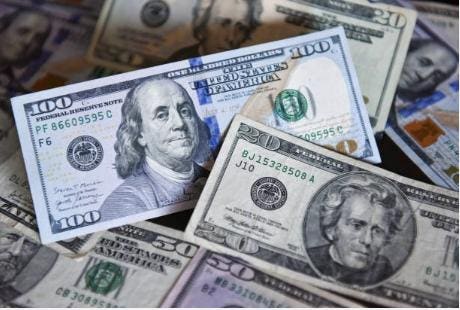I’m an optimist, and I invest accordingly—for the long term. But I’ve learned that staying optimistic doesn’t mean ignoring macroeconomic headwinds. One to note in particular is the weakening of the U.S. dollar. Not just as a matter of technical FX movement, but as a signal of political ambition, shifting global sentiment, and increasing systemic risk.
So far in 2025, the dollar has slid more than 8 percent against a basket of major currencies—the worst start to a year in the ICE U.S. Dollar Index’s four-decade history. The Index is flashing red, not just from macroeconomic drift, but from something more structural: a deliberate policy path that raises real concerns about the dollar’s global role.
The White House has begun floating what’s been dubbed the “Mar-a-Lago Accord,” an effort to realign the dollar lower, ostensibly to boost U.S. manufacturing competitiveness. As Treasury Secretary Bessent and CEA Chair Stephen Miran have made clear, their objective includes pushing down long-term Treasury yields by encouraging coordinated dollar weakness.
But there’s a rub. Weakening the dollar while maintaining its global reserve status is no easy feat. The dollar is the backbone of global capital markets precisely because it has been strong, stable, and immune from political whim. Now, with erratic trade policy and ambiguous messaging out of Washington, we’re seeing the costs of treating monetary dominance as negotiable.
As Goldman Sachs recently noted, the “exceptionalism premium” that has long underpinned the dollar is eroding. Tariffs are not just affecting trade flows—they’re also tightening margins, depressing consumer real incomes, and undermining confidence in U.S. institutions.
The bond market sees it. Rates are backing up—not due to growth optimism, but because foreign holders of Treasuries are reevaluating. As of February 2025 according to Perplexity, overseas investors held $8.8 trillion in U.S. debt. If that buyer base falters, Treasury yields must rise to compensate, driving up U.S. borrowing costs and further weakening the dollar’s safe-haven credentials.
A weakening dollar also puts foreign central banks in a bind. It inflates their currencies, damages their export competitiveness, and forces them to contemplate premature rate cuts. We are in uncharted territory where the traditional “flight to quality” reflex—strong dollar, falling U.S. yields—is failing to materialize. And further, global investors may feel less inclined to automatically choose the U.S. as their refuge.
And yes, markets are noticing what many won’t say out loud: that the U.S.markets now carry a political risk premium. As the Financial Times observed, U.S. bonds are behaving less like pristine risk-free assets and more like emerging market instruments—“the EM-ification of the U.S.” is now a serious talking point.
To be clear, there are scenarios—such as a global recession scare—where the dollar could rally in a short-lived flight to safety. But that’s not a bet most want to make. The long arc is defined by confidence. Undermining the dollar for short-term strategic gains risks damaging trust that took decades to build. And trust, once shaken, isn’t easily restored.
The administration might see currency devaluation as a tool for reindustrialization. However, policymakers would be wise to proceed with caution. The dollar isn’t just another macro lever—it’s a cornerstone of American economic leadership. Erode it, and we may all discover how fragile that leadership can be.
Read the full article here

